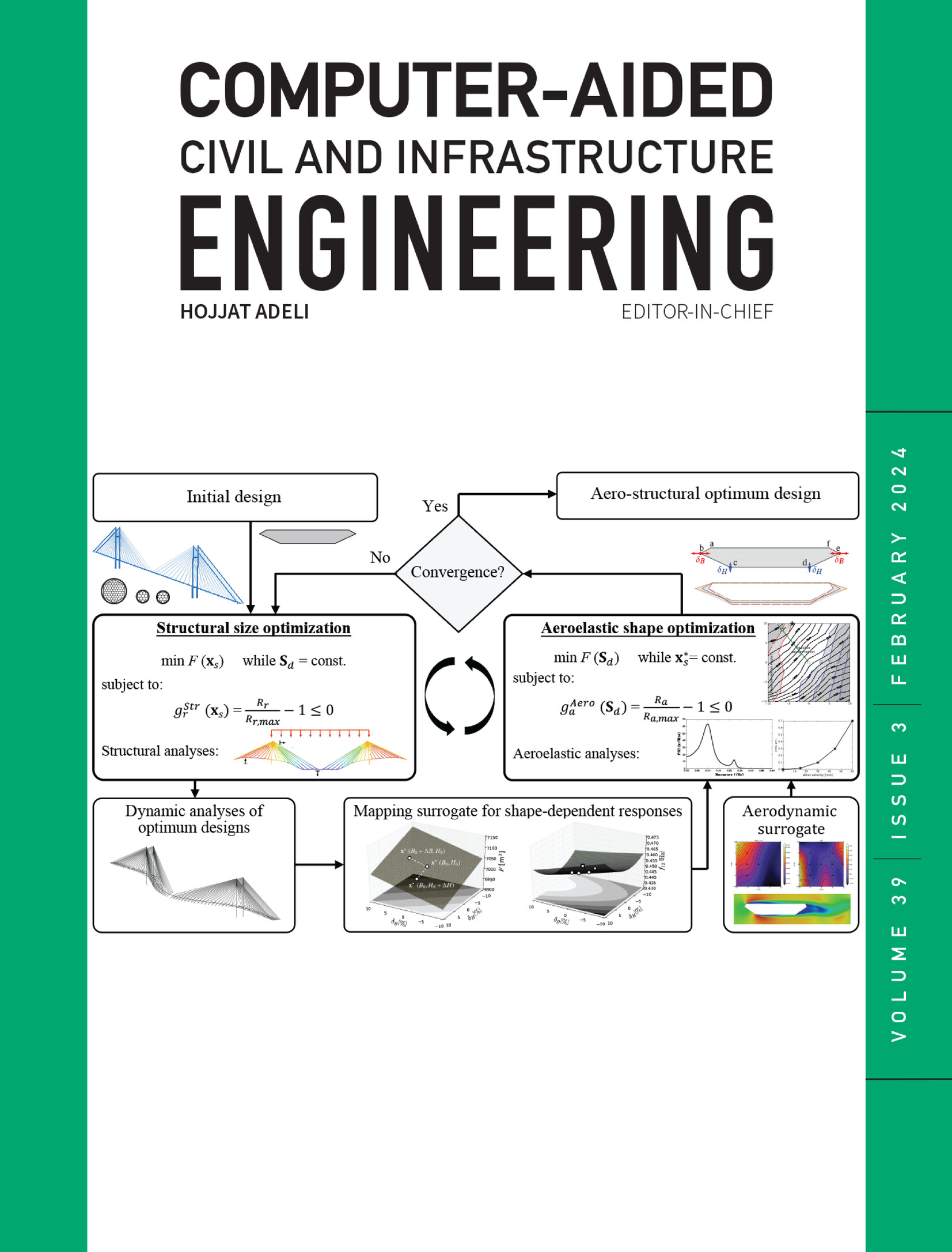Multicategory fire damage detection of post‐fire reinforced concrete structural components
IF 8.5
1区 工程技术
Q1 COMPUTER SCIENCE, INTERDISCIPLINARY APPLICATIONS
引用次数: 0
Abstract
This paper introduces an enhanced you only look once (YOLO) v5s‐D network customized for detecting various categories of damage to post‐fire reinforced concrete (RC) components. These damage types encompass surface soot, cracks, concrete spalling, and rebar exposure. A dataset containing 1536 images depicting damaged RC components was compiled. By integrating ShuffleNet, adaptive attention mechanisms, and a feature enhancement module, the capability of the network for multi‐scale feature extraction in complex backgrounds was improved, alongside a reduction in model parameters. Consequently, YOLOv5s‐D achieved a detection accuracy of 93%, marking an 11% enhancement over the baseline YOLOv5s network. Comparison and ablation tests conducted on different modules, varying dataset sizes, against other state‐of‐the‐art networks, and on public datasets validate the resilience, superiority, and generalization capability of YOLOv5s‐D. Finally, an application leveraging YOLOv5s‐D was developed and integrated into a mobile device to facilitate real‐time detection of post‐fire damaged RC components. This application can integrate diverse fire scenarios and data types, expanding its scope in future. The proposed detection method compensates for the subjective limitations of manual inspections, providing a reference for damage assessment.火灾后钢筋混凝土结构部件的多类别火损检测
本文介绍了为检测火灾后钢筋混凝土(RC)构件的各类损坏而定制的增强型 "只看一次"(YOLO)v5s-D 网络。这些损坏类型包括表面烟灰、裂缝、混凝土剥落和钢筋外露。数据集包含 1536 幅描述受损钢筋混凝土构件的图像。通过集成 ShuffleNet、自适应注意力机制和特征增强模块,该网络在复杂背景下进行多尺度特征提取的能力得到了提高,同时模型参数也有所减少。因此,YOLOv5s-D 的检测准确率达到 93%,比基准 YOLOv5s 网络提高了 11%。在不同模块、不同数据集大小、其他最先进网络和公共数据集上进行的比较和消减测试验证了 YOLOv5s-D 的弹性、优越性和泛化能力。最后,开发了一个利用 YOLOv5s-D 的应用程序,并将其集成到移动设备中,以方便实时检测火灾后受损的 RC 组件。该应用程序可集成多种火灾场景和数据类型,从而扩大其未来的应用范围。所提出的检测方法弥补了人工检测的主观局限性,为损坏评估提供了参考。
本文章由计算机程序翻译,如有差异,请以英文原文为准。
求助全文
约1分钟内获得全文
求助全文
来源期刊
CiteScore
17.60
自引率
19.80%
发文量
146
审稿时长
1 months
期刊介绍:
Computer-Aided Civil and Infrastructure Engineering stands as a scholarly, peer-reviewed archival journal, serving as a vital link between advancements in computer technology and civil and infrastructure engineering. The journal serves as a distinctive platform for the publication of original articles, spotlighting novel computational techniques and inventive applications of computers. Specifically, it concentrates on recent progress in computer and information technologies, fostering the development and application of emerging computing paradigms.
Encompassing a broad scope, the journal addresses bridge, construction, environmental, highway, geotechnical, structural, transportation, and water resources engineering. It extends its reach to the management of infrastructure systems, covering domains such as highways, bridges, pavements, airports, and utilities. The journal delves into areas like artificial intelligence, cognitive modeling, concurrent engineering, database management, distributed computing, evolutionary computing, fuzzy logic, genetic algorithms, geometric modeling, internet-based technologies, knowledge discovery and engineering, machine learning, mobile computing, multimedia technologies, networking, neural network computing, optimization and search, parallel processing, robotics, smart structures, software engineering, virtual reality, and visualization techniques.

 求助内容:
求助内容: 应助结果提醒方式:
应助结果提醒方式:


